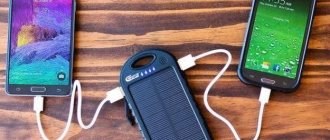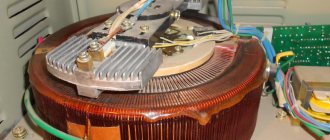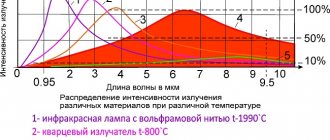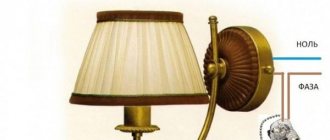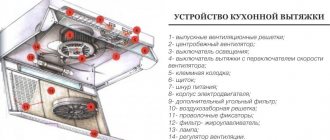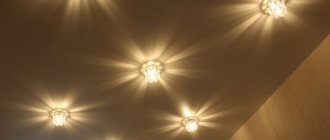Here you will learn:
- How does a typical LED light work?
- Why do you need a solar garden lamp?
- How long do solar lamps burn?
- Review of solar wall street lights with motion sensors
- Retro solar garden lights
- Lamps for illumination of plants and ponds
- Lamps for installation on fence or gate posts
- DIY solar garden lamp
- How to repair a solar battery yourself
You can make solar-powered street lamps yourself, as can repairs. Such lamps come with motion sensors and are installed in the country house or in the courtyard of a private house.
How does a typical LED light work?
Of course, they all look different.
The box contains the assembled lamp itself, two separate “legs” - short and long. There is also a black plastic tip that sticks into the ground, and instructions.
Having two “legs” is very convenient. After all, someone will want to “plant” a lamp directly on the surface of the soil. Then a short tube will do. Some may want to raise the lamp above the surface. Then the long one is used. In any case, you don’t have to immediately saw off anything or look for a suitable extension cord. This kind of concern for the consumer is always pleasant.
The ball itself is not glass, but plastic. This simplifies the design and makes it safer. True, glass, unlike plastic, does not scratch, but then the product would cost more.
It doesn’t seem difficult, but it sounds like a million. Is solar energy expensive?
Solar energy is free, but the equipment needed to use it can cost a lot of money. However, the simplest garden lights with a solar panel can be bought for ridiculous money, about $1-3. Yes, they are not suitable as lighting devices, but they can be used to mark a path, for example, or the boundaries of a site. There are, of course, more expensive versions, equipped with motion or sound sensors, separate solar panels, etc. and so on. But even the most expensive garden lights will pay for themselves a hundredfold in a fairly short period, because solar energy is FREE!
Why do you need a solar garden lamp?
In our humble opinion, such lamps can be considered more of a toy than a device that brings specific benefits. It’s also good that the matte lampshade somewhat diffuses the LED radiation. We just happened to see how similar lamps with transparent plastic shades work. The light from bright LEDs really hurts the eyes. It is extremely unpleasant to be in a garden illuminated in this way.
So why are they needed?
Most likely, they should be placed where the devices themselves will not be visible, but will highlight visible areas of the garden. For example, behind a tree trunk, in bushes, on spruce branches, etc. At the same time, we must not forget that solar-powered lamps require sunlight to recharge. Otherwise they won’t work for even ten minutes.
Where are they installed?
There are many options for installing garden lights. As a rule, several standard design solutions are used that are suitable for most objects. Among them, the installation of wall lanterns located on the facade of the building is often practiced. The mounting locations are the external walls of houses and other vertical surfaces (Fig. 1).
This installation method requires careful selection of placement points, since correct operation will depend on the intensity of the sun's rays. On cloudy days, the battery charge may be low and will not last all night. Therefore, it is recommended to additionally install traditional backup lamps.
Pendant lamps (Fig. 2) have much in common with wall lamps. However, the use of special fasteners makes it possible to install them in any location. These could be tree branches, fences, etc. You can highlight certain areas and create festive decor.
An outdoor garden lamp mounted on a pole is often used (Fig. 3). At first they were used to illuminate city streets, and now they are widely used in dachas and country houses. Lanterns perform not only a lighting, but also a decorative function.
A solar-powered park lamp (Fig. 4) is installed together with a large and powerful solar panel and high-capacity batteries. Such solar systems provide long-term autonomous operation. The case is made of high-quality materials and is protected from dust and moisture.
Lawn lamps (Fig. 5) are installed directly on the ground. They are equipped with a small leg stuck into the ground or a special support of sufficient height. Such devices are easily installed anywhere and can be moved if necessary.
Another type of lighting fixtures is made in the form of decorative elements (Fig. 6). These can be stones, flowers, fairy-tale characters powered by batteries, with the help of which the most spectacular places in the garden are highlighted.
How long do solar lamps burn?
This is a great question! How long do they burn? All night long? Or just an hour or two?
We cannot give an answer about all lamps at once. They are very different, with different capacities of built-in batteries.
Moreover: the same lamp can burn “longer” or “not so long” depending on how well it is charged and what the current ambient temperature is. You understand that after sunny and cloudy days, the operating time will be different. At +20 degrees or at zero too.
Based on our experience, we will say the following. The LED ball lights we bought worked after a sunny day for about 3-4 hours. That is, until we went to bed. After a cloudy day, charging the battery from the solar battery only lasted 1-2 hours.
On the one hand, it’s somehow not enough. I wish the charge lasted all night. On the other hand, why would they light up at night when you are sleeping? After all, we agreed that such devices cannot be regarded as primary lighting. This is just a decorative toy light. Nobody sees her at night anyway, so why should she burn?
Of course, our “balls” did not go out at the same time. The difference was about half an hour.
Making a lamp with your own hands
Simple solar powered garden lantern circuits can be assembled by anyone who has minimal knowledge in this field.
Selecting parts for the flashlight
Before you start purchasing all the components for assembling the lamps, you need to take into account the quantity, since the power of each of them will depend on this, which means the components will be different:
- The first thing you need is to buy an energy converter. A polycrystalline silicon battery is considered one of the best for such purposes. Its weight is very light, and its protection against moisture and damage is high. In addition, the power is quite high.
- A lithium-ion battery is a must.
- Next, you need a lighting element. The most popular type of LED now is a conventional LED. It is possible to install an LED lamp, but its energy costs are unreasonably high. Do-it-yourself lighting from solar panels based on a regular LED is quite enough.
- The last and most vital part of the device is the electronic control module, which consists of two pairs of resistors and a pair of transistors.
Connection of the LED, battery and solar battery is carried out separately. For assembly, you can purchase a fairly cheap and versatile DIY PCB board 42x25mm.
Review of solar wall street lights with motion sensors
Pros:
- Does not require electrical wiring. Bought it, attached it and use it.
- Energy saving.
- In the conditions of central Russia, solar-powered street wall lamps without motion sensors do not shine all night long, since the battery does not have time to fully charge under our usually gloomy sky. The motion sensor saves battery power.
Minuses:
- The mounting location of the lamp should be such that the solar battery is located in direct sunlight.
- In winter, snow falls on the solar panel and it stops working.
- The battery will have to be replaced sooner or later.
- They only light up when a person walks by. For decorative lighting of the landscape, you should use lamps without motion sensors that illuminate the space constantly.
Popular model with good design. There is a motion sensor, the operating range depends on the location of the lamp. LEDs - 16 pcs. Protection level: IP65. Li-ion battery: 3.7 V, 1000 mAh. Brightness: 100 lm. Price: 929 rubles for 2 pieces. ..
Plastic case. Protection: IP65. Lithium rechargeable battery 3.7 V / 900 mAh. LEDs - 16 pcs. Weight: 185 g. The motion sensor is triggered at a distance of 3-5 m. Price: 428 rubles.
Popular and nice model with a motion sensor. The sensor's response range depends on the location of the lamp. Aluminum body with plastic. LEDs - 20 pcs. Color temperature 5500-6000 K. Protection level: IP55. Battery Ni-MH 1000 mAh/3.7 V. Brightness: 340-600 lm. Price: 841 rub. ..
A convenient design with a loop allows you to easily remove the lamp from the wall (for example, to put it away for the winter). According to the seller, the motion sensor works for 8 meters (in reality it is probably less). The light turns on for 20 seconds and if there is no movement within the sensor's coverage area, the light turns off. Quite dim, LEDs - 6 pcs. Lithium battery: 600mA, 3.7 V. Price: 964 rub. .. There may be cheaper ones in a white case, but we managed to find them only for 822 rubles. ..
Housing made of stainless steel and plastic. Housing protection IP65. Lithium battery 3.7 V / 2200 mAh. LEDs - 8 pcs. The light is warm white or cool white to choose from. Two operating modes. When there is no movement, the brightness is 20 lumens. When a person passes by 2000 lumens - 18 seconds. Price: 587 rub. ..
Two body color options (black and white). Protection level: IP65. Several operating modes. One of them lights up dimly, but when the motion sensor is triggered, it lights up at full power. The way the lamp is mounted makes it easy to remove it from the wall. Li-ion battery: 3.7 V / 1000 mAh. LEDs - 16 pcs. Price: 696 rub.
Solar-powered LED wall-mounted street lamp with a rotating mechanism. LEDs: 18 pcs. Housing protection degree: IP65. Price: 1,039 rub. ..
LED wall street lamp powered by a solar battery. LEDs: 17 pcs. Housing protection degree: IP65. Price: 317 - 1,265 rub. ..
46 LEDs. Lithium-ion battery 3.7 V / 1700 mAh. Protection level: IP65. Body color black or white. There is a motion sensor. Price: 1,272 rub. ..
Bright lamp with 118 LEDs. Housing protection: IP65. 3 operating modes. Motion Sensor. Price: 1,033 rub. ..
Wall lamp with 14 LEDs with a rotating mechanism. Brightness - 70 LM. Housing protection: IP65. Motion Sensor. Price: 1,742 rub. ..
For sections of walls located in the shade, outdoor wall lamps are used to allow the solar panel to be exposed to the sun.
Outdoor LED lamp with remote solar battery. Brightness: 180LM. Motion Sensor. LEDs - 56 pcs. Price: 1116 rub. ..
Outdoor LED lamp with remote solar battery. Housing available in white or black. Motion Sensor. Brightness: 450 LM. LEDs - 22 pcs. Price: 828 rub. ..
Outdoor LED lamp with remote solar battery. Motion Sensor. Brightness: 750 LM. Price: 1900 rub. ..
Outdoor LED lamp with remote solar battery. Housing available in white or black. Motion Sensor. Brightness: 1000 LM. LEDs - 188 pcs. Color temperature: 6000 K. Price: RUB 2,704.
Types of garden lamps
Garden lamps powered by solar panels are available in a wide range of models and designs.
They are classified according to various parameters and characteristics;
- Materials used in devices. Most often it is durable plastic, metals and their alloys, hardwood. Each lighting device is installed outdoors, so special means are used to process the materials. Metals are coated with anti-corrosion compounds, and wood is impregnated with substances that prevent drying out and rotting. Lampshades are made from various types of glass. Surfaces can be smooth, transmitting light as much as possible, or reflective - most effective in cloudy weather. There are more durable tempered glasses that protect against mechanical stress.
- Rechargeable batteries. They are used to store electricity obtained from sunlight. Nickel-cadmium batteries have a capacity of up to 700 mAh and ensure lamp operation for 8-10 hours. Nickel-metal hydride models with high technical and economic indicators are considered more modern and efficient.
- Various types of silicon used in solar cells. Monocrystalline and polycrystalline options are mainly used. The former are more expensive, but they are more effective and durable. The second elements are used in cheap models because during operation there is a rapid loss of potential and a decrease in performance. They are more suitable for decorative lighting and are used occasionally in the summer.
Lamps for illumination of plants and ponds
A separate review needs to be written on this topic. Here is just one of the most popular lamps of this type.
Solar powered floating LED light for pond or pool. 7 colors which can be selected from the remote control. 12 LEDs. This is not an essential item, but a good gift. Price: 1569 rub.
Lamps for installation on fence or gate posts
The case is plastic. An exclusively decorative element of the landscape, it shines dimly (1 LED), but allows you to place these flashlights at eye level. Housing protection degree: IP33. Price: 690 rub.
The body is plastic, but made neatly. An exclusively decorative element of the landscape, it shines dimly, which allows you to place these lanterns at eye level. Housing protection degree: IP33. Price: RUB 2,092
DIY solar garden lamp
One of the advantages of making lamps “on your own” is that your model will be exclusive and completely reliable (after all, you made it yourself). However, remember: it is unlikely that you will be able to achieve significant savings. We will not describe expensive circuits using ready-made controllers, but will focus only on the simplest option. Almost anyone who has ever held a soldering iron in their hands can repeat it.
Schematic diagram of an easy-to-replicate lamp
The schematic diagram below of a lamp powered by sunlight is very simple, and has been tested many times by numerous amateurs who specialize in making useful devices with their own hands.
Schematic diagram
How it works:
- During the daytime, the solar panel (S) converts the energy of light rays into electricity.
- The current it produces through diode D1 charges the battery (A).
- The positive potential applied to the base through resistor R1 “holds” transistor T1 in the off state and LED D2 does not light up.
- When the solar panel illumination decreases significantly, the transistor opens (due to a decrease in the positive potential applied to the base) and connects LED D2 to the battery. The LED starts to light up.
- Diode D1 prevents the battery from discharging through the solar panel.
- With the onset of dawn, the positive voltage coming from the “+” output of the solar panel to the base “closes” transistor T1 and LED D2 stops lighting, and the battery begins to charge again.
Criteria for selecting parts and prices
The choice of parts depends on how powerful the lamp you intend to make. We provide specific ratings for a homemade lighting device with a power of 1 W and a luminous flux intensity of 110 Lm.
Since in the above diagram there are no elements for monitoring the battery charge level, then, first of all, you need to pay attention to the choice of solar battery. If you choose a panel with too little current, then during daylight hours it simply will not have time to charge the battery to the required capacity. Conversely, a light panel that is too powerful can overcharge the battery during daylight hours and render it unusable.
Conclusion: the current generated by the panel and the battery capacity must match each other. For a rough calculation, you can use the ratio 1:10. In our specific product, we use a solar panel with a voltage of 5 V and a generated current of 150 mA (120-150 rubles) and a battery form factor 18650 (voltage 3.7 V; capacity 1500 mAh; cost 100-120 rubles).
Also for production we will need:
- Schottky diode 1N5818 with a maximum permissible forward current of 1 A - 6-7 rubles. The choice of this particular type of rectifier part is due to the low voltage drop across it (about 0.5 V). This will allow you to use the solar panel most efficiently.
- Transistor 2N2907 with a maximum collector-emitter current of up to 600 mA - 4-5 rubles.
- Powerful white LED TDS-P001L4U15 (luminous flux intensity - 110 lm; power - 1 W; operating voltage - 3.7 V; current consumption - 350 mA) - 70-75 rubles.
Important! The operating current of LED D2 (or the total total current when using multiple emitters) must be less than the maximum allowable collector-emitter current of transistor T1. This condition is met with a margin for the parts used in the circuit: I(D2) = 350 mA < Ike(T1) = 600 mA. Battery compartment KLS5-18650-L (FC1-5216) - 45-50 rubles. If, when installing the device, you carefully solder the wires to the battery terminals, you can refuse to purchase this structural element.
- Resistor R1 with a nominal value of 39-51 kOhm - 2-3 rubles.
- We calculate the additional resistor R2 in accordance with the characteristics of the LED used.
Purpose and calculation of an additional resistor in the LED power circuit
The battery voltage may be too high for the LED (this may cause it to fail). To compensate for its excess we use an additional resistor R2. We calculate its denomination based on the formula: U(A) = U(D2) + U(R2), where:
U(A) – battery voltage;
U(D2) – LED operating voltage;
U(R2) – voltage drop across additional resistor R2.
For the TDS-P001L4U15 LED used in the above circuit with an operating voltage of 3.7 V, the use of resistor R2 is not required, since U(A) = U(D2). That is, our specific scheme will look like this:
As an example of calculating additional resistors, consider a circuit with the connection of two different types of LEDs: D2 - BL-L813UWC (operating voltage - 2.7 V; current consumption - 30 mA; cost - 15 rubles) and D3 - FYL-5013UWC/P (2, 2 V; 25 mA; 20 rubles).
We calculate the additional resistor R2 for LED D2.
U(A) = U(D2) + U(R2)
U(R2) = U(A) – U(D2) = 3.7 – 2.7 = 1 V
According to Ohm's law (familiar to everyone from school):
U(R2) = R2 • I, where I is the current consumed by the LED, therefore
R2 = U(R2) : I = 1 : 0.03 = 33.33 ≈ 33 Ohm
Similarly, we calculate the additional resistor R3 for LED D3:
U(R3) = U(A) – U(D3) = 3.7 – 2.2 = 1.5 V
R3 = U(R3) : I = 1.5 : 0.025 = 60 ≈ 62 Ohm
On a note! After calculations have been made, the values of additional resistors are rounded to the nearest standard values.
The final circuit with two different types of emitters will look like this:
Installation
The circuit consists of a minimum number of elements, so installation can be easily carried out using a hinged method. The length of the “legs” of the parts will be quite enough to perform soldering without the use of additional wires. After completing installation and checking the functionality of the manufactured luminaire, all joints should be insulated using a heat pencil or appropriate sealant.
For those who prefer to mount components on a printed circuit board, they can do so using a universal circuit board of suitable dimensions or one made independently.
What to make a lampshade from
Before we tell you what shapes can be used to make a lampshade, let us remind you of the requirements that must be observed when making the lamp body yourself:
- The solar panel should be located outside on the top of the product so that it is well illuminated during the daytime.
- All connecting seams between structural elements must be carefully sealed (the components of the circuit are afraid of moisture).
- LEDs must be placed in the transparent part of the lampshade.
Otherwise, everything will depend only on your imagination, personal preferences and available materials. One of the simplest options is to use a glass jar as a lampshade (for example, for storing bulk products) with a wide neck and a tight lid:
- make a hole in the lid and pass the wires from the solar panel through it;
- fix the solar panel on the outside using sealant;
- We mount the battery compartment and circuit elements on the inner surface;
- We place the LEDs at the bottom of the can.
You can successfully use a food container made of transparent plastic as an almost finished case. There are a large number of such products on sale in various sizes and shapes (round, square, rectangular). The choice will depend on the size of the solar panel and the number of LEDs.
Solar lamp design
All solar lamps in the small and medium price range are currently equipped with almost identical solar panels with an area of no more than 9 square centimeters. The solar panel charges the battery. The size and capacity of the battery depends on the dimensions of the lamp and the honesty of the manufacturer. As a rule, standard batteries of small or medium capacity are used. Sometimes, if you are smart, you can buy a lamp for 45 rubles and become the owner of a new AA battery with a capacity of 1 A/h. Most lamps are equipped with switches. Using a switch, you can disconnect the battery from the power circuit. Using the switch is very convenient when storing lamps in winter.
The areas of solar panels are equal
Internal filling of lamps
Backside
